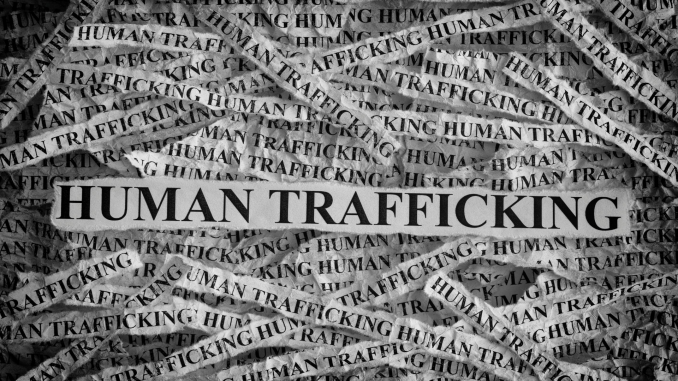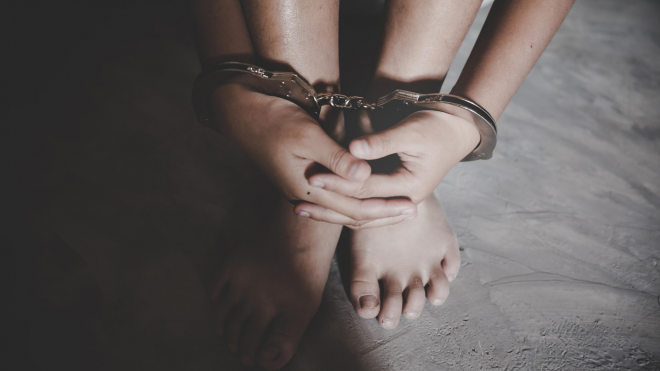
The arrest of Ghislaine Maxwell has lead to an explosive awareness of human trafficking in recent weeks. Social media is littered with stories about victims and those expressing frustration that the issue hasn’t attracted the same level of outrage as other topics. Much of the frustration comes from an inability to act. After all, what can we, the average citizen, do?
Human trafficking is an issue as old as time. It is also one of the most prevalent crimes, despite the public’s relatively low awareness of the issue. Human trafficking is defined as “the recruitment, transportation, transfer, or harboring of people by means of threat, fraud, deception, or force”. The victims of human trafficking are recruited, then transported, and sold to rich client who use them as laborers, prostitutes, farmers, and soldiers. Trafficking occurs all over the world and it is estimated that around 1.2 million children are trafficked annually. Adults are also frequently victims of human trafficking.
Two Types of Trafficking
Human trafficking falls into two basic categories; sexual exploitation and labor exploitation. Most people think of sexual exploitation, but labor exploitation is also big business.
Labor Exploitation
According to Interpol, victims of labor exploitation may end up working in agriculture/farming, mining, fisheries, or construction work. Victims may also become domestic servants or be forced into other labor-intensive jobs. Labor exploitation is the modern equivalent of slavery or indentured servitude.
Sexual Exploitation
Sexual exploitation is the more commonly known type of human trafficking. Studies have shown that 80% of sexual exploitation victims are female. What many do not know is around 70% of them are sexually exploited in the film industries, advertising industries, fashion industries, and private organizations. There is currently a petition with over a million signatures circulating to shut down popular porn site Pornhub. This began with confirmation that a 15 year-old victim of human trafficking was “verified” by the site as an 18 year old content producer.

First Hand Knowledge of the Damage
I worked for several years in child welfare. I started out working for a contractor and eventually moved to the state as a child abuse investigator. During my time there I saw my fair share of terrible things. It is always shocking to me just how horrible people can be to each other.
Young people in foster care have a significantly higher likelihood of trafficking than the average youth. Their preexisting background of abuse and neglect makes them vulnerable to others seeking to take advantage of them. Children in foster care who run away become easy targets for traffickers. These people take advantage of the child’s fear and desperation, sometimes befriending them and getting them addicted to drugs before selling them into slavery.
The long term affects of being trafficked are many. Even those who get out experience often times irreparable damage to their well-being. Victims can suffer health issues such as HIV/AIDS, substance abuse, and infections. Many suffer from PTSD, anxiety, depression, fear, and other trauma based mental health issues. Some victims even suffer from memory loss, depression, cognitive impairment, and may be suicidal.
What can the 2A Community Do?
I’ve talked to many members of the 2A community lately about the issue of human trafficking. Like everyone else, they feel helpless and wonder what they can do. As gun owners, one of the greatest assets we have is our heightened awareness about our surroundings. We can use this increased situational awareness to watch for signs of human trafficking and report concerns to law enforcement.
A lot of us in the 2A community travel regularly to attend training and classes. I know over the next couple of months several of the Primer Peak staff will be traveling to classes across the country. When we are out and about we have the opportunity to use our awareness skills to watch for warning signs and potentially save someone from a horrible fate.
Unless someone’s life is in imminent danger you should not intervene in a potential trafficking situation. Even then, you should seriously consider the dangers and remember what your mission is (generally to get home safe to your family). I know many gun owners have adopted a Sheepdog point of view, but that can be dangerous in many situations. Instead take note about what you see and report it right away. Things like descriptions of the potential victim and captor, any vehicles, location, heading, behaviors observed, and anything you overhear can help law enforcement respond more quickly.
What to Watch For
The Department of Homeland Security has some great resources for identifying potential victims of human trafficking. You can see the complete list here, but these are a few things you can watch for out in public:
-
Is a juvenile engaging in commercial sex acts?
-
Is the person disoriented or confused, or showing signs of mental or physical abuse?
-
Does the person have bruises in various stages of healing?
-
Is the person fearful, timid, or submissive?
-
Does the person show signs of having been denied food, water, sleep, or medical care?
-
Is the person often in the company of someone to whom he or she defers? Or someone who seems to be in control of the situation, e.g., where they go or who they talk to?
-
Does the person appear to be coached on what to say?
Recognizing and reporting human trafficking can be difficult to do, but it is worth the effort to at least be aware. This is an ever growing problem and is likely to get worse as poverty related to the pandemic grows. Desperate people often times find themselves in desperate situations. We can’t save everyone, but we can all do our part to help where we can. Google local groups working with victims of trafficking and consider volunteering or donating if you can. Here in Kansas City I support Veronica’s Voice and the great work they are doing.


Be the first to comment